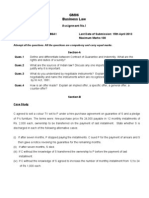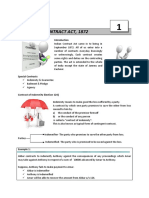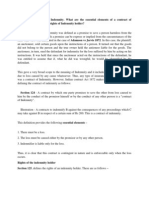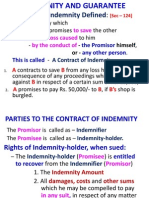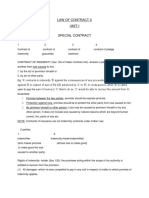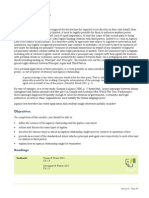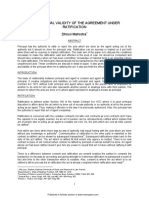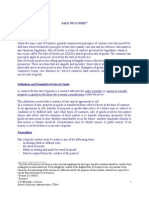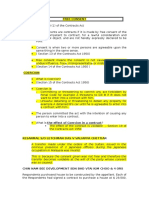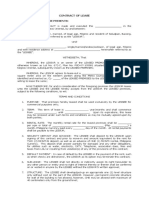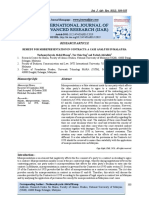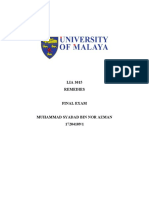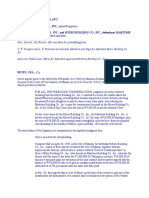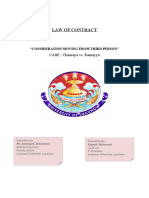0% found this document useful (0 votes)
14 views7 pagesLAB Assignment 1
This document summarizes the key legal aspects of contracts and damages:
1. The document discusses the rules that guide courts in assessing damages for breach of contract, including that damages aim to compensate losses, not punish.
2. It explains the differences between penalties and liquidated damages in contracts, and that courts can reduce unreasonable stipulated damages amounts.
3. The rights of sureties are outlined, including sureties' rights against creditors to maintain securities, rights to indemnification from principal debtors, and rights to contribution among co-sureties.
Uploaded by
khushiCopyright
© © All Rights Reserved
We take content rights seriously. If you suspect this is your content, claim it here.
Available Formats
Download as PDF, TXT or read online on Scribd
0% found this document useful (0 votes)
14 views7 pagesLAB Assignment 1
This document summarizes the key legal aspects of contracts and damages:
1. The document discusses the rules that guide courts in assessing damages for breach of contract, including that damages aim to compensate losses, not punish.
2. It explains the differences between penalties and liquidated damages in contracts, and that courts can reduce unreasonable stipulated damages amounts.
3. The rights of sureties are outlined, including sureties' rights against creditors to maintain securities, rights to indemnification from principal debtors, and rights to contribution among co-sureties.
Uploaded by
khushiCopyright
© © All Rights Reserved
We take content rights seriously. If you suspect this is your content, claim it here.
Available Formats
Download as PDF, TXT or read online on Scribd
/ 7
















